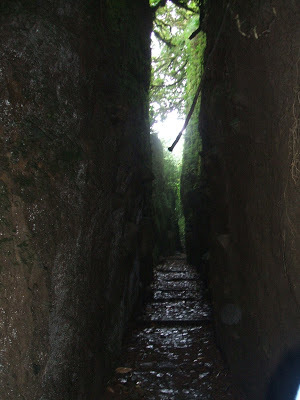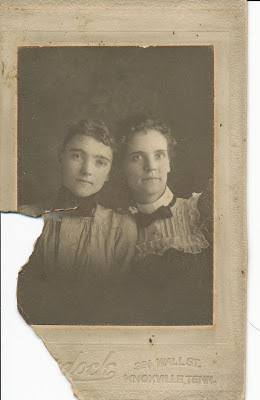Where do you get your ideas? This is something writers hear a lot, and for reasons I'll never understand, a surprising number of authors find it an annoying question. I don't.

Most of my ideas come while doing research for another book. The core idea for
Why Mermaids Sing came to me when I was researching shipwrecks for
Beyond Sunrise, my last romantic adventure. The mystery surrounding the death of the Dauphin, the core idea for
Why Kings Confess, has fascinated me since I was a doctoral student in the 80s. Even songs can be inspiring: the idea for
When Maidens Mourn came from years of doing my morning yoga to Loreena McKennitt's lovely version of
The Lady of Shalott. But other sources are less easy to pinpoint. The idea of having Paul Gibson buy the body of a man who had been murdered--the inspiration for
Where Shadows Dance--came out of the blue one night while I was taking a bath. And some ideas are such accretions that it's impossible to say where they came from.
Because I have a lousy memory, over time I tend to forget the details of the process. Which is why I was excited when, in the midst of a mammoth cleanup of old emails over the weekend, I came upon a letter I'd written to my daughter in the autumn of 2004. She was attending university in Egypt at the time, and I was working on the proposal for
When Gods Die. Because it talks about where the idea for both
Gods and a certain necklace came from, I thought those of you who've read the book (if you haven't, there are spoilers) might find it interesting. Here is the relevant section:
I have finished the draft of my proposal--synopsis and the first 4 chapters. I will sit on it for a week, then polish it some more and send it off. For some reason adding the bit about the necklace really fired me up. It's so funny that I didn't think of it before. The whole backstory behind the murder is a conspiracy to put the Stuart heir (for my purposes, a Savoy prince) on the throne. The murder victim (who was not a part of the conspiracy but was in love with one of the conspirators) has always been fascinated by the Stuarts because she's a descendent of James II and his Welsh mistress. Sebastian agrees to look into all of this because she is found wearing a necklace that his mother was wearing the day she was supposidly lost at sea. When I first came up with the idea, I was going to have it just be a necklace. Then when I was writing the scene, I was wracking my brain, trying to figure out how to make it believable that the Machievellian Lord Jarvis would have recognized a simple necklace in order to be able to convince Sebastian to help. I got as far as having Sebastian kneeling beside the body and reaching for the necklace, and I'm still thinking, What does this necklace look like? Then this lightbulb goes off in my head, and suddenly I'm describing Polly's necklace and the legend about it growing warm and choosing its next guardian. I put in Druid priestesses and links to James II, and it added this wonderful whole new dimention to the book that wasn't there before and that gives it a fantastic lift. Now, instead of just being a necklace, it's this very special, mysterious necklace that is going to weave its way into future books, too. It's so bizarre I never thought of it before, since Goditha Price was the inspiration for the Welsh mistress. Only problem is, I can't remember what the design was called. Tri-what?
I should probably explain that the "Polly" I'm referring to was a distant, 103 year-old-cousin. She had in her possession a necklace given to one of our common ancestors by his mother, Mary, an illegitimate daughter of the prince who eventually became James II and a lady-in-waiting to the Queen named Goditha Price. When Mary's son Edward was exiled from Scotland after a Jacobite uprising, she gave him the necklace along with a heartrending letter that Polly still preserved (She also still had his sword! How neat is that?). The legend of the necklace growing warm and choosing its next owner, as well as its supposed ability to bring long life, was explained in Mary's letter to her son. She says it's why she gave it to him--to protect him. The funny part of this snippet from my email to my daughter is that it shows just how much of a spur-of-the-moment afterthought weaving this tale into the series was. And I had totally forgotten that.

Incidentally, although history records that Goditha was James II's mistress (Samuel Pepys rather nastily refers to her as "fat Price"), the birth of her son is not officially recorded, and I've received some ugly "you made that up" pushback on-line for telling this story. However, in addition to the sword, necklace, and letter, Polly also had in her possession ancient pages cut from a beautiful, gold-leafed, illuminated bible that had Edward's genealogy going back on both sides. I've also been involved in genetic research for porphyria, and my version of that nasty blood disorder is extraordinarily rare and traces back to the Stuarts. It's all enough to convince me the story of Mary's parentage is true and I frankly don't care if anyone else believes it. I've told the tale only because it felt wrong to let people think I was clever enough to make up the necklace legend when all I did was borrow it. Apart from which, if I wanted to invent grand genetic ties, I'd pick people I admired more than a woman who has gone down in history as "fat Price," a guy who got his head cut off, and another guy who lost his throne! What a heritage.
 newest »
newest »
 newest »
newest »
 I love this inside thought process. Fantastic!
I love this inside thought process. Fantastic!






